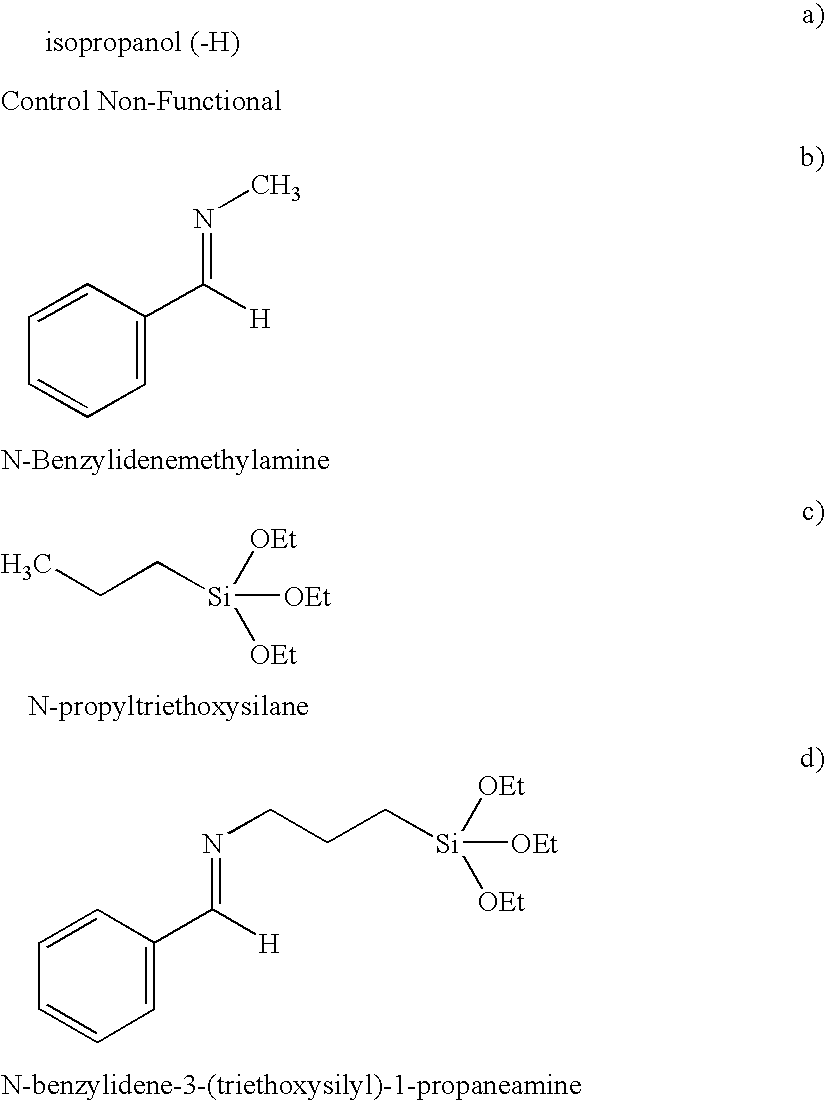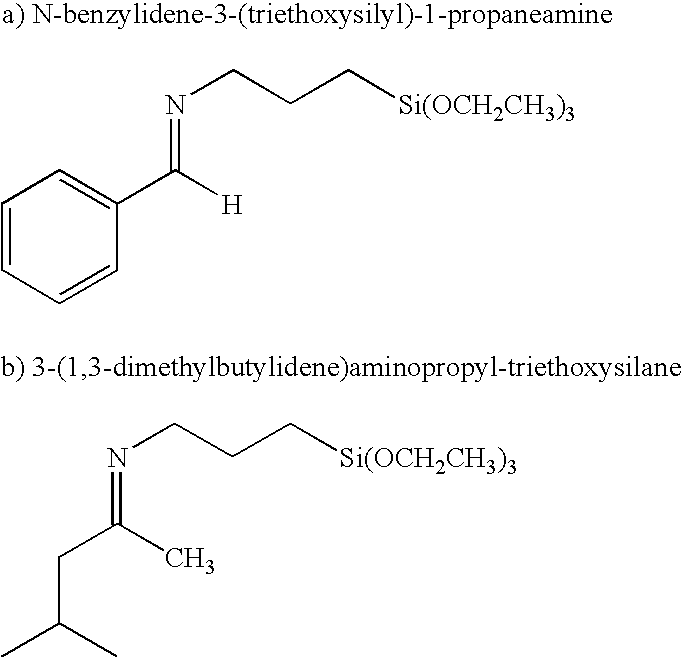Methods of making siloxy-imine functionalized rubbery polymers and uses thereof in rubber compositions for tires
a technology of functionalized rubber and polymer, which is applied in the field of making siloxyimine functionalized rubber polymer and its use in the rubber composition of tires, can solve the problems of increasing and reducing the wear resistance of the tire tread, so as to improve the wear resistance, good fracture characteristics, and low exothermicity. the effect of good reinforcing characteristics
- Summary
- Abstract
- Description
- Claims
- Application Information
AI Technical Summary
Benefits of technology
Problems solved by technology
Method used
Image
Examples
example 1
[0047]Preparation of non-functional control polymer: Polymerizations were carried out in a one gallon batch reactor under moderate stirring and inert nitrogen atmosphere. The reactor is equipped with a variable speed agitator and a heating / cooling jacket to control the reactor temperature via a distributed Foxboro control system. Prior to polymer loading, the reactor was filled with dry hexane and quenched with n-BuLi to minimize the scavenger level. The reaction temperature was set at 60° C. Approximately 1500 grams of 14.5 wt % premix (25 / 75 wt / wt styrenelbutadiene in hexane) was charged into the reactor after it was first passed through a bed of molecular sieves and silica gel under a nitrogen atmosphere. N-Butyl-lithium initiator and N,N,N′,N′-tetramethylethylenediamine (TMEDA) modifier were introduced via common syringe techniques. Conversion data was determined gravimetrically or by gas chromatography (GC) analysis of residual monomer. For GC testing, aliquots of the reaction ...
example 2
[0048]Preparation of functional polymers: Functionalized polymers were prepared as described in Example 1 with the exception that isopropanol / BHT termination was replaced with the appropriate functionalized terminating agent, as discussed further below in Example 3, used at one molar equivalent to the amount of butyl-lithium used to initiate the polymerization. Base Mooney viscosity prior to the functional termination was approximately 40 for all functional polymers and Tg of −25° C.
example 3
[0049]Representative example showing the unexpected performance enhancement of N-benzylidene-3-(triethoxysilyl)-1-propaneamine: Four polymer types were prepared as described in Example 1 (control) and Example 2 (functionalized polymers). Functionalized terminating agents are shown below:
Siloxy-Imine Termintors
[0050]
[0051]The polymers were compounded as follows: The polymers were prepared, and ultimately tested for unexpected performance, into a compound including 65 phr of Silica, 70 phr of the experimental or control polymer, and 30 phr of polybutadiene, and other additives, as follows:
StageIngredientphrNP1Solution styrene70butadiene rubber,functionalized orcontrolNP1Polybutadiene30NP1Silica65NP1Coupling Agent*10.4NP1Oil20NP1Zinc oxide3.5NP1Stearic Acid2NP1Antioxidant2.2NP1Wax1.5NP2re-millPRSulfur1.7PRAccelerators3.1PRAntioxidant0.75*50 wt % active absorbed on carbon black
Compounds were mixed in a 300 cc Brabender mixer in 3 stages, which consisted of 2 non-productive stages (NP1 a...
PUM
| Property | Measurement | Unit |
|---|---|---|
| Fraction | aaaaa | aaaaa |
| Percent by mass | aaaaa | aaaaa |
| Percent by mass | aaaaa | aaaaa |
Abstract
Description
Claims
Application Information
 Login to View More
Login to View More - R&D
- Intellectual Property
- Life Sciences
- Materials
- Tech Scout
- Unparalleled Data Quality
- Higher Quality Content
- 60% Fewer Hallucinations
Browse by: Latest US Patents, China's latest patents, Technical Efficacy Thesaurus, Application Domain, Technology Topic, Popular Technical Reports.
© 2025 PatSnap. All rights reserved.Legal|Privacy policy|Modern Slavery Act Transparency Statement|Sitemap|About US| Contact US: help@patsnap.com


